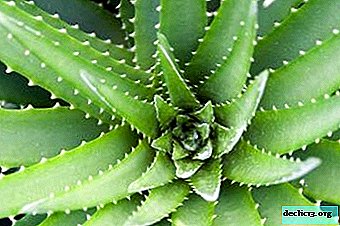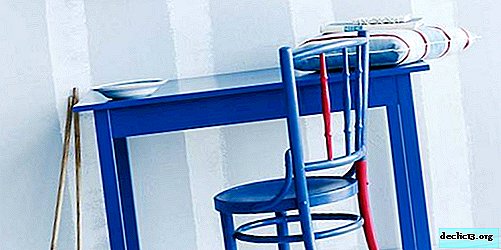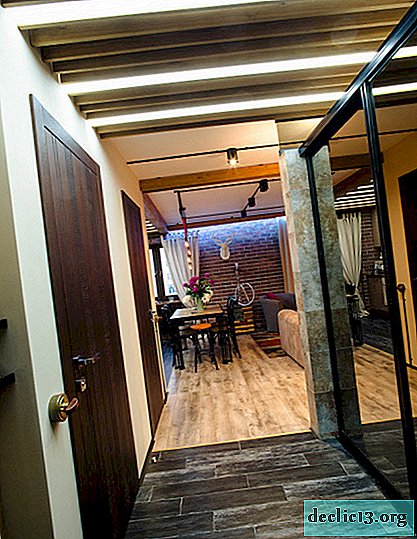Varieties of pink hibiscus. Features of reproduction and flower care
Pink hibiscus is a type of plant called "princess earrings." The flower has an attractive appearance, therefore, it serves as a decoration for any site, apartment or house. The plant is even recognized as a national symbol in Hawaii, and beauties wear its flower in their hair. Consider what features pink hibiscus has.
Varieties of plants of this color and photo
This plant has about 250 species. Varieties include a type of shrub with a different color of buds. Consider the most popular types of pink hibiscus and give them a photo.
"Swamp"
It has the Latin name Hibiscus moscheutos L. It is considered the most common species. Has large pinkish flowers, sometimes with reddish or purple spots at the base of the corolla. Leaves reach up to 10 centimeters, and flowers - up to 12 centimeters wide.

The Pink Giant
Hibiscus Janet is a species of hibiscus shrub that has uniform and solitary pink flowers, which have a purple tint at the base. Feature - has rather large leaves.

"Carneus Plenus"
Hibiscus Carneus Plenus is a shrub that has flexible shoots, and the leaves of the flowers have a terry structure and pink color with a crimson spot in the center.
There are also domestic varieties of pink hibiscus.

"Youth"
Variety "Youth" - a shrub that reaches a height of one and a half meters, the stems have a yellowish-greenish tint, and the flowers are pink with a white bottom and a bowl up to 10 centimeters in diameter, similar to the shape of a tulip.

"Late"
Late variety is a small meter-tall bush that has many jagged leaves, and the flowers have a raspberry and pinkish hue with lilac veins. The flowers themselves resemble bells in shape.

"Pale pink"
The variety "Pale Pink" is a bush up to 170 centimeters high, which has yellowish leaves and flowers, similar to pink tulips and a white bowl.

“Pink and Porcelain”
Pink-porcelain is a bush that has yellowish leaves, it reaches up to 130 centimeters in height. Bell flowers have a light pink tint, delicate with a yellowish throat.

How to care at home?
Many varieties of hibiscus are grown at home, but in warm countries they like to plant it in garden plots.
- Temperature. Hibiscus loves heat and does not take too much cold. The optimum temperature for its harmonious growth and development is from 13 to 22 ° C. Hibiscus hardly tolerates wintering, usually the plant is sheltered or transplanted by spring. It feels great in room conditions, greenhouses and conservatories.
- Watering. The plant needs moderate watering, and even less often in winter. But in the summer, it is necessary to spray the shrub so that in the heat it does not lose leaves.
Water should not fall on the flowers themselves, since humidity does not benefit them - they fall or become stained. It is best to provide natural humidity by placing a pot of plants on wet pebbles or planting in soil that moderately transmits moisture.
- Shine. Hibiscus is a photophilous plant, loves the sun's rays, normally tolerates heat. In winter, it is better to rearrange the pot with the plant on the sunny side. But it is also impossible to keep it under the scorching sun - from a drought a plant may lose its leaves.
- Priming. For planting, it is necessary to make the soil loose, “airy” and well structured. It is best to add peat to it, a little coniferous litter (for planting in the garden). For planting in a pot, slightly acidic soil is suitable, for this it needs to be periodically flavored with various nutrient solutions and minerals.
- Pruning. The plant must be cut, there is a certain order. Pruning after planting is done in spring.
- You need to take special garden shears and cut all branches except 3-4 side.
- The remaining branches are cut into a ring.
- The central conductor of hibiscus should be 20-25 centimeters higher than the upper branch.
- Then you can plant and form an already annual plant.
- After planting, pruning should be done early in the spring, making a pinch.
- It is important to remember that hibiscus, which is grown indoors, must also be pruned. But it is better to pinch in January, and pruning in early May or late April.
- Top dressing. The plant must be fed by choosing organic fertilizers. It is better to take a bloody in the proportions of one to ten. It is necessary to feed annually, combine with mineral fertilizers, which will contain phosphorus (ordinary phytophosphates will do).
In winter, you do not need to feed hibiscus, water moderately. And top dressing should be continued after a transplant, somewhere in two months.
- Pot. If you grow a plant in a pot, then choose a large and tall pot made of plastic or clay. It is advisable to transplant the plant during its growth into a wider pot so that the hibiscus is comfortable.
- Transfer. Young plants are transplanted annually, and adults - three times a year with the replacement of the surface layer of the earth annually.
- The transplant is made in the spring.
- A soil mixture of sod, humus and peat with deciduous land is selected in proportions two to one.
- Sand and bone meal are added to it.
- The plant is pruned to form a crown.
- Then expanded clay is laid out at the bottom of the pot.
- A layer of a mixture of soil and charcoal is poured.
- A plant is removed and installed in a pot along with a layer of earth.
- The soil is added, and the stem is tied to a wooden stick.
- The soil is watered abundantly, it is impossible to expose it for the first two or three days.
- Wintering. Hibiscus is a heat-loving plant, so in winter it must be kept in a bright room at a temperature of 14-16 ° C or in a moderately warm conservatory. Watering should be moderate, it is advisable to avoid strong humidity.
Propagation Features
There are two types of breeding - seed and vegetative. Both are effective in hibiscus cultivation. It grows beautifully from both seeds and cuttings.Seeds remain viable for six months. During the growing season, cuttings can be taken from a plant that has lived a year. Seeds are planted in late February - early March. Before planting, they must be lowered into a potassium permanganate solution, and then added to the growth stimulator solution for the whole day. Then they are wrapped in gauze and wait until they sprout.
Briefly about diseases and pests
 Like any flower plant hibiscus pink suffers from various diseases and pests. Among the most common:
Like any flower plant hibiscus pink suffers from various diseases and pests. Among the most common:
- blackleg;
- caterpillars
- spider mite;
- aphid;
- chlorosis;
- powdery mildew;
- thyroid and pseudothyroid.
Similar flowers
Some plants are similar to hibiscus. So, sometimes her flowers resemble:
- Tulips
- Roses.
- Spathiphyllum.
- Eustoma.
- Terry Adenium.
Pink hibiscus is a unique plant that does not require special care, but loves warmth and relative humidity. Hibiscus feels great both in the garden and in the pot on the windowsill. And about the beneficial properties of this plant are legends.

















